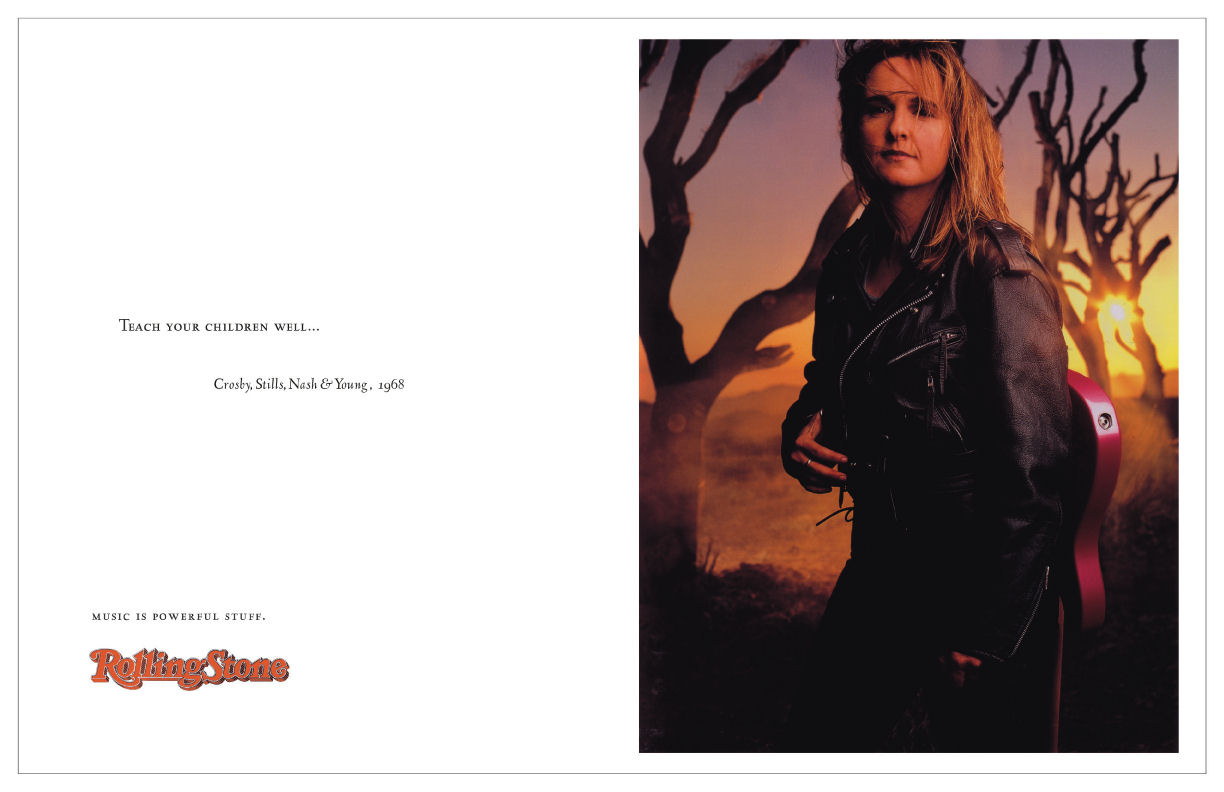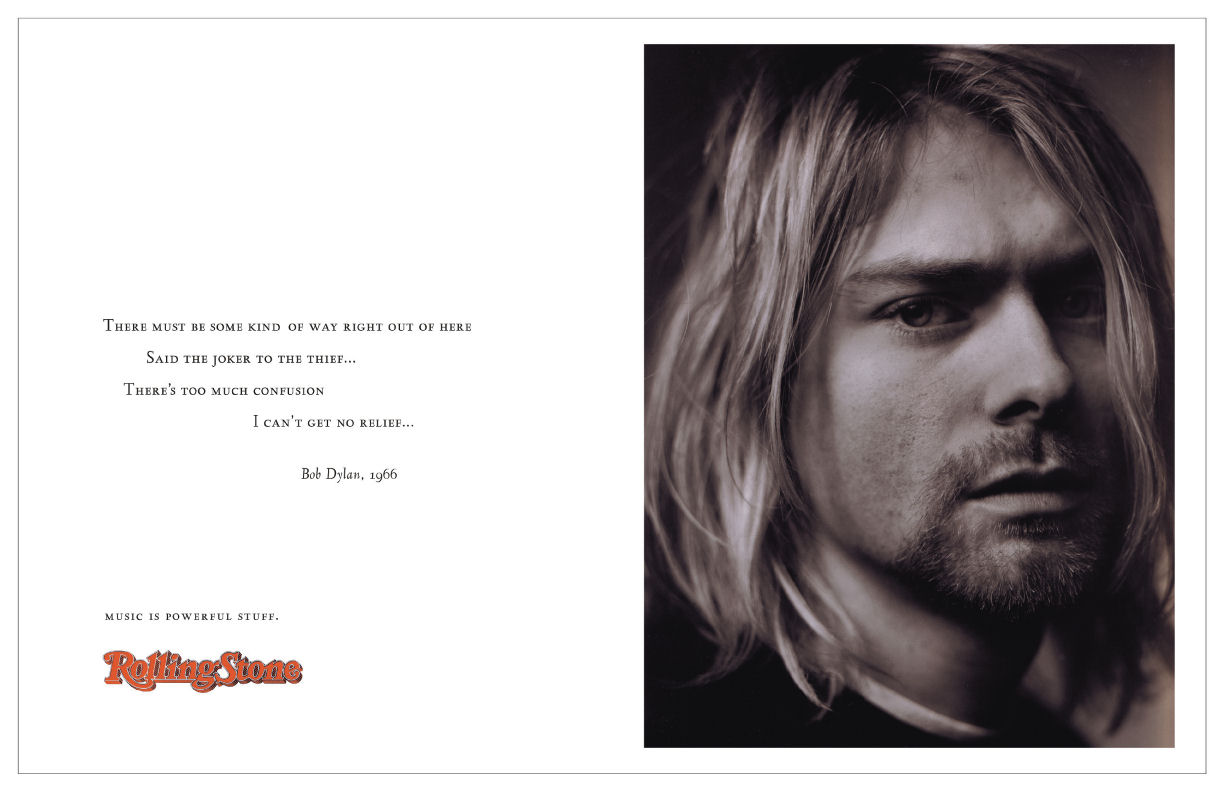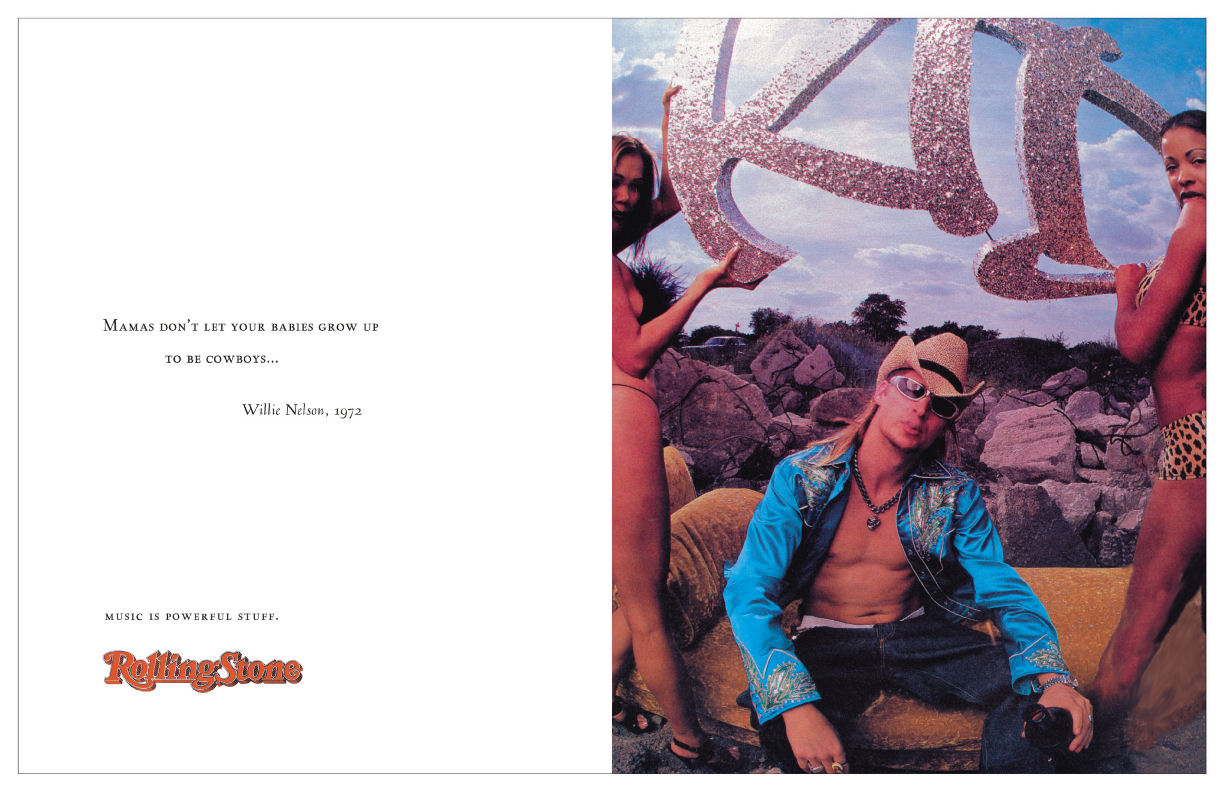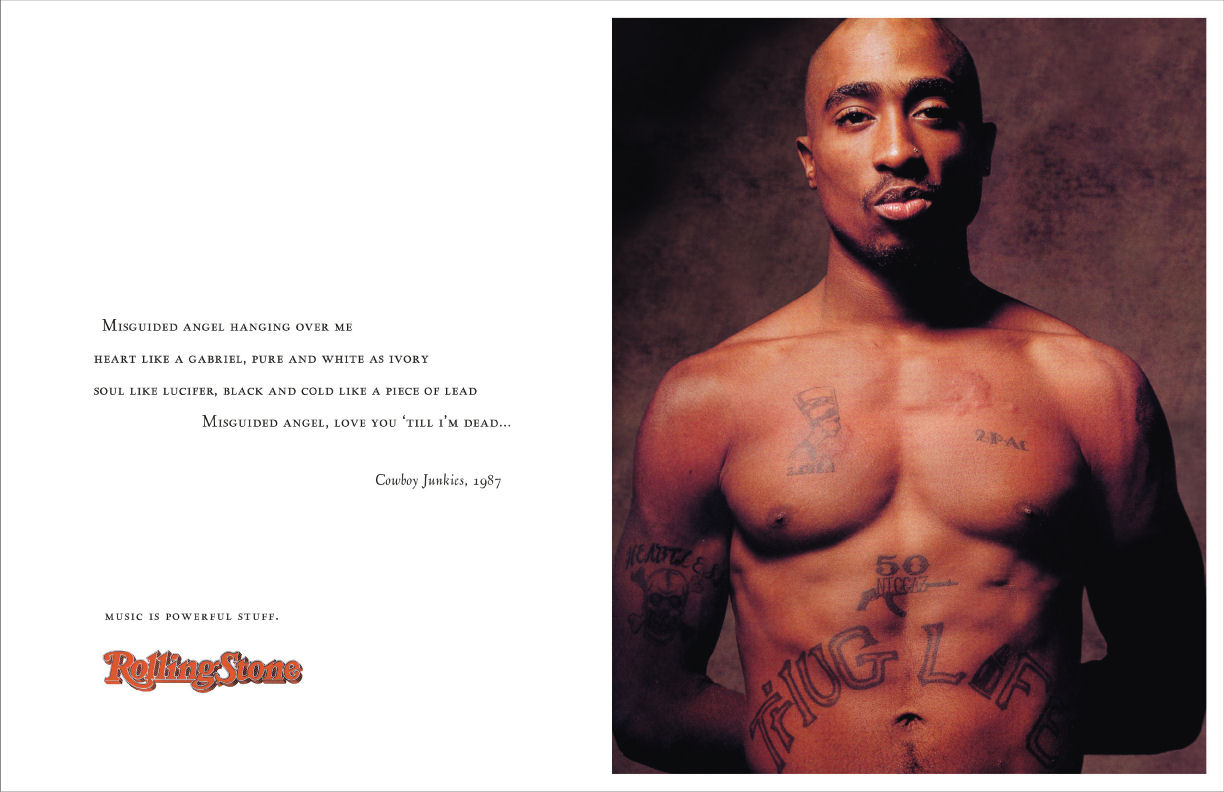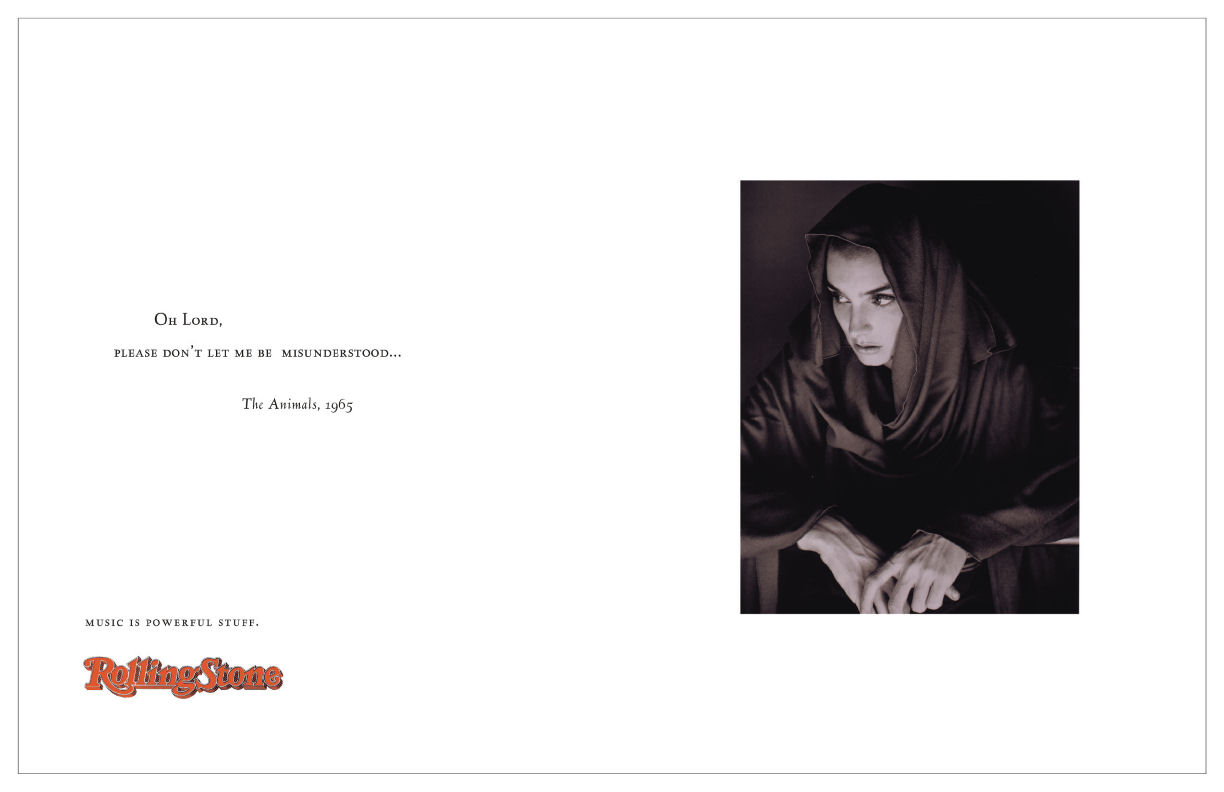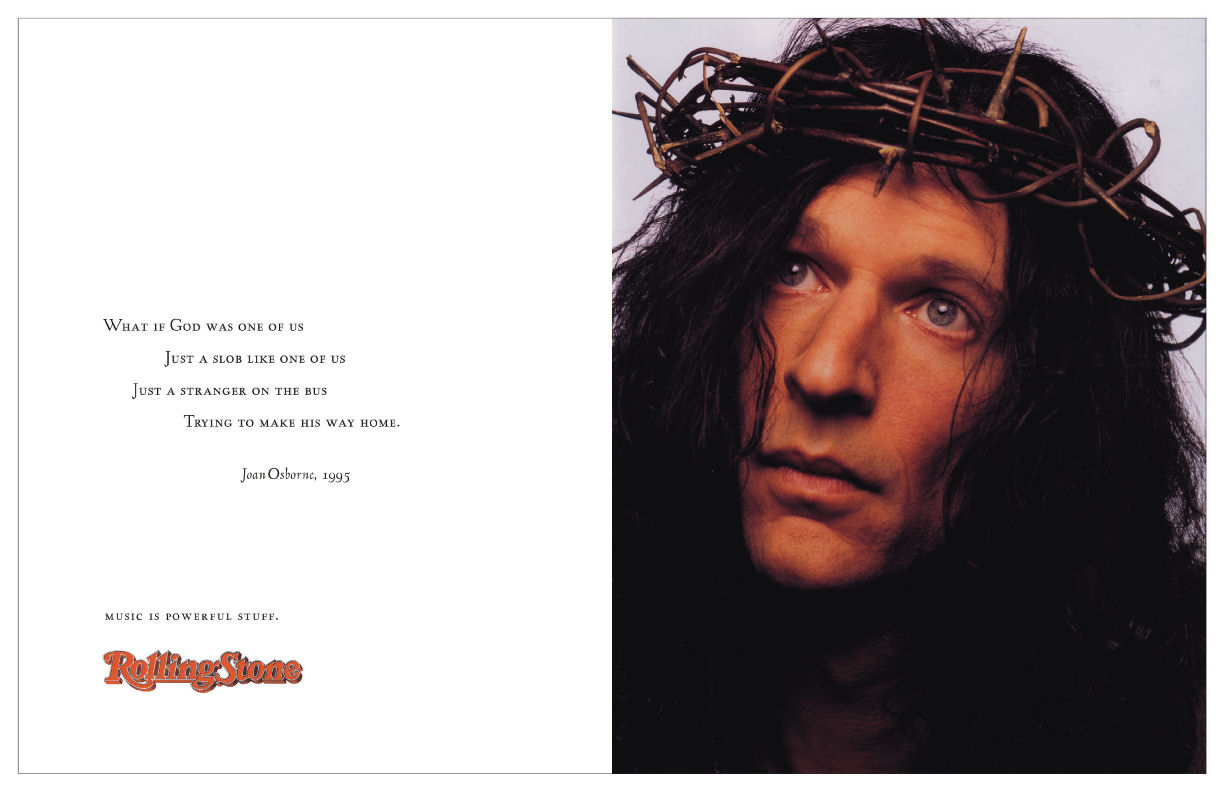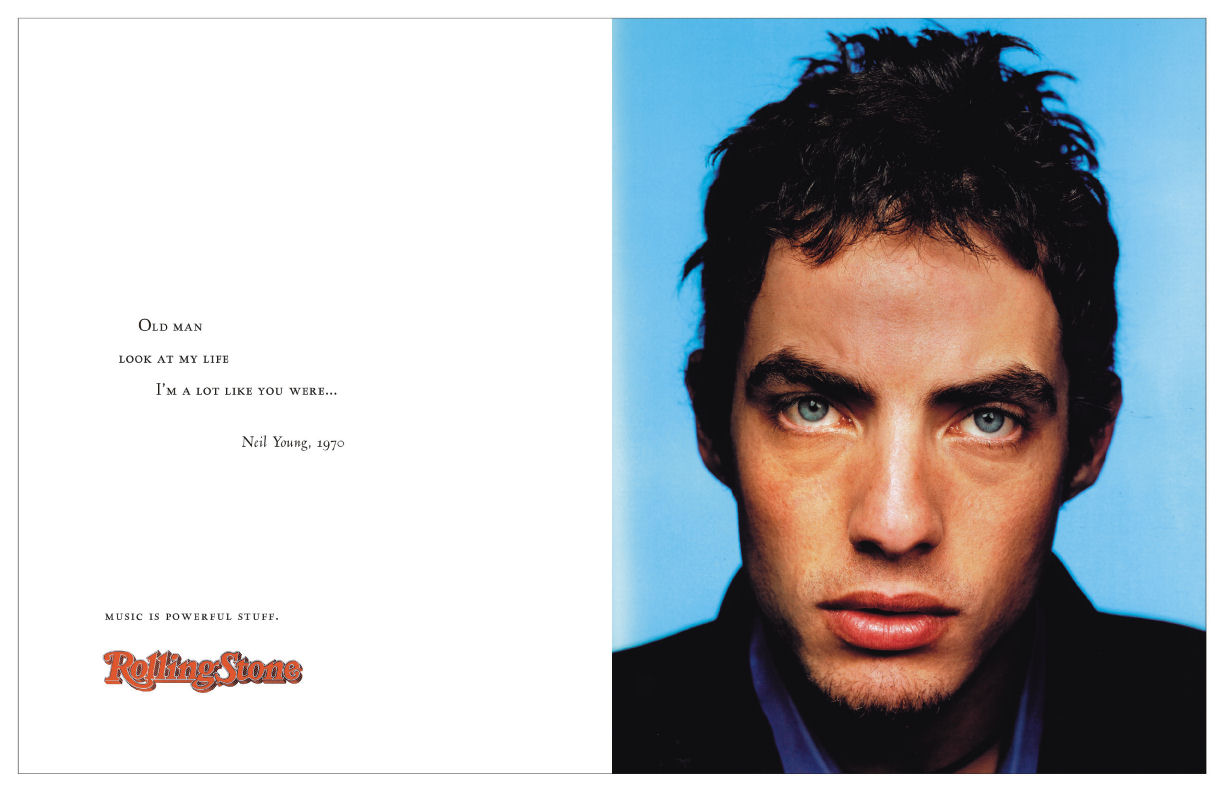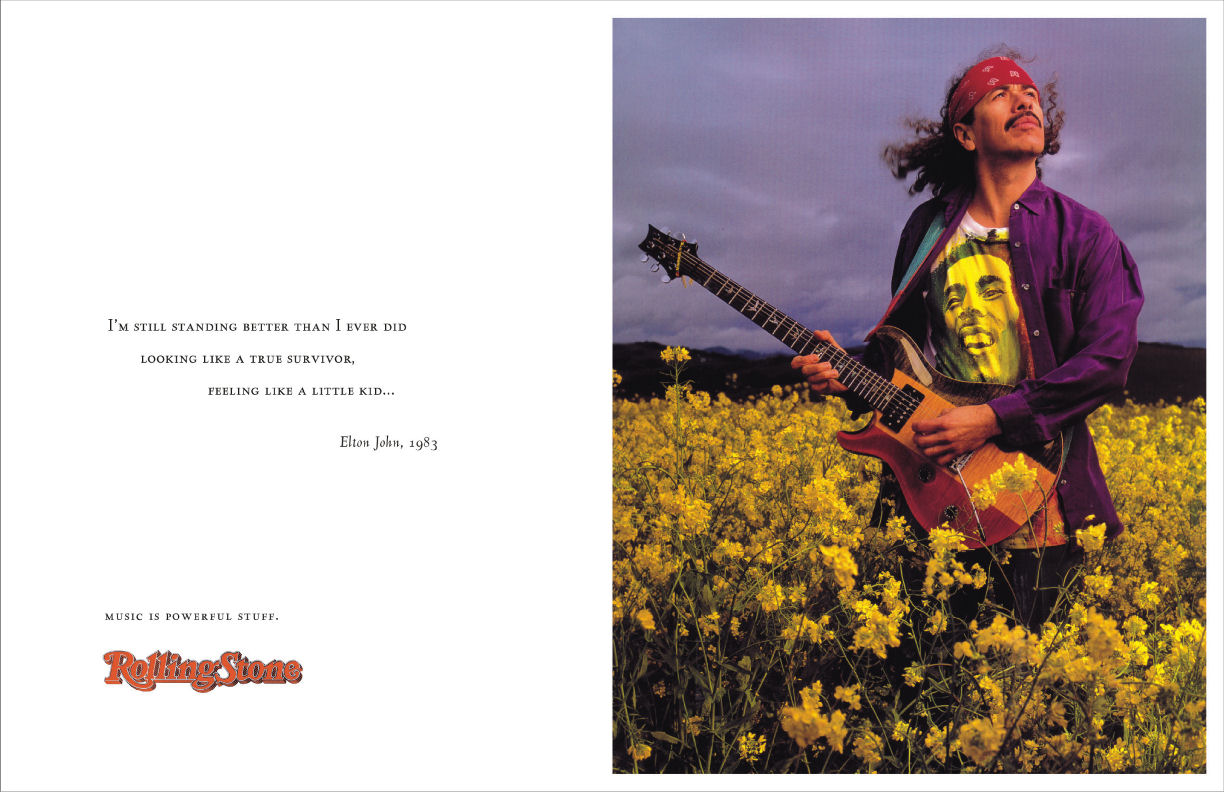i am cameron day
THE ROLLING STONE FIASCO. [IF I EVER WRITE AN ADVERTISING TELL-ALL, THIS WILL BE A CHAPTER.]
{NOTE: WE’RE GOING TO BREAK FORMAT AND TELL THIS CASE STUDY AS A STORY]
GSD&M was on a big, fat Reverend Roy fueled roll. Having recently won the Land Rover business, the agency subsequently won the coveted Wenner Media account consisting of US magazine, Men's Journal, and Rolling Stone magazines. All appeared to be hunky-dory. Strong campaigns were well underway for Men's Journal and US magazines, but there was trouble in publishing paradise. Rolling Stone sales were sucking wind like a pack-a-day smoker running a marathon in fuck-me pumps.
Rolling Stone had a dirty little secret and it was rapidly pointing the magazine in the wrong direction. Their audience consisted of two distinctly different demographics that didn't make good chili together. Aging 40+ subscribers were one end with coveted younger readers were on the other end, who typically bought RS off the newsstand if they bought it at all. The older demo was shrinking, and the younger demo was consuming music differently and didn't consider Rolling Stone a musical authority. And who can blame them? Years prior, RS had made the editorial decision to expand their content beyond music to include movie critiques, fashion spreads, even audio equipment reviews. In the meantime, each of those specific interests sprouted specialty magazines of their own.
The only answer was to go back to being focused more on music, without alienating either demographic. The strategy had been pitched to Wenner and his marketing team was strategically on board and optimistic about the idea. Unfortunately, executing the idea into advertising was proving easier said than done. The agency had gone round after round on the brief and was taking a pounding at the hands of Wenner and his marketing team. Using the proposed tagline, "The Power of Music," Rolling Stone wasn't seeing work they liked. In frustration, Jann Wenner announced that he was going to bring NY shops in on the assignment if GSD&M didn't crack the code in their next meeting.
Those were fightin' words to Reverend Roy, the “S” .of GSD&M. The agency went into hyper-full-court-press beast mode. Freelancers were brought in, including ringers who'd worked on the brand editorially. GSD&M was determined not to whiff. I found out about all of this on a flight to present to our Pennzoil client in Houston. Nancy George, who was an account executive on Pennzoil ancillary brands and the RS account, spilled the beans to me. I had no idea, as my group functioned totally independently of Wenner Media's creative group. When I asked Nancy what she thought the problem was, I'll never forget what she said. "The client has told us repeatedly that we can use any of their images, but apparently, the creatives think the editorial images are played out.
I damn near swallowed my gum. I'd been a subscriber for fifteen years. In my mind, Rolling Stone was a treasure trove of great portraiture from the likes of Annie Leibovitz, Mark Seliger and David LaChapelle. Nancy happened to have Seliger's coffee table book on the plane and handed it to me to look at. As I wrestled with the notion of appeasing two audiences with a strong emphasis on music, an idea occurred to me.
What if we juxtaposed current and classic musical genres by juxtaposing old and new via lyrics and images. ? And what if we were able to use those juxtapositions to make a social commentary?
As I thumbed through Seliger's portraits, I came to an image of Melissa Etheridge, whom I'd just read an article about in Rolling Stone. In the article, she'd revealed that she'd asked David Crosby to donate his sperm so that she and her partner could conceive a child. He happily obliged. A Crosby, Stills, Nash & Young song suddenly popped into my head. "Teach Your Children Well."
I knew I was onto something.
The idea quickly led to a couple dozen more before we'd landed in Houston. When I got back to the agency that afternoon, I asked two fellow music lovers at the agency if they'd like to pitch in. By the next morning, AE Eric Asche and copywriter Bill Bayne had come up with dozens more executions using David LaChapelle and Annie Leibovitz images. And the best part? Their ideas were inspired by their own playlists, rather than my own. Juxtaposing lyrics and images was conceptually fun and graphically simple — and it beautifully leveraged Rolling Stone images.
I asked my GCD partner David Crawford if he'd design a layout that mirrored Fred Woodward's editorial style and David deftly did so. Before the end of day, we had dozens of layouts demonstrating the idea, and I slightly tweaked the working line to my liking: "Rolling Stone. Music is powerful stuff."
Much to the chagrin of Rolling Stone's creative directors, my campaign consisting of a couple dozen four-color spreads was deemed viable by the powers that be and hastily added to the campaigns going forward. I could understand the CDs' reticence. After all, it wasn't as if I'd been asked to work on it and I already had Land Rover in my group.
GSD&M left for New York loaded for bear. Seven campaigns were taken and mine was the second shown.
Five campaigns never made it out of the bag that day.
My office phone rang in Austin, Texas and I answered it. An unfamiliar voice spoke, "Hello, is this Cameron Day...?"
"Yes it is," I replied.
The voice continued, "I just wanted to call and say thank you..."
"For what?", I asked.
"For getting it... and I also wanted say congratulations."
"For what?", I inquired.
"You're now the creative director of Rolling Stone."
CLICK
I'd just had a very brief conversation with none other than Jann Wenner. I remember being dumbfounded by what had just happened.
Evidently, Jann and Fred Woodward had gone through all of the ads in my campaign and had flat-out loved the idea, even stopping to debate their personal favorites.
They didn't need to see anything else. It was game over. Hail Mary. Touchdown. Fred Woodward did make one request. "Don't mess with the art direction."
Ten ads were chosen and approved on the spot. Not bad for a batch of ads conceived in the span of 48 hours by myself, a young writer, and an account guy and designed in fifteen minutes at the hands of a tasty art director.
As you can imagine, the creative directors in the room were mortified when Jann Wenner asked who was responsible for the idea. Nancy suspected that Jann had been tipped that past employees had been hired freelance and was determined to find out where the idea actually originated. That's when Nancy explained that it was a full time employee of GSD&M and Jann asked for my number.
GSD&M has cause to celebrate. The fire was officially out. As for the Creative Directors on the business, what can I say? We'd won the battle but they'd lost the war.
There were a lot egos bruised that day and things were a little tense back at the agency. I was already a GCD on Land Rover and now Rolling Stone appointed me CD on their account. You could already hear the grumbling from the other groups. Roy Spence didn't help matters when he sent out an all-agency memo announcing that "one of our own, Cameron Day, was responsible for saving the Rolling Stone biz."
I saved the memo to show my mom, as that's clearly the closest I'd ever come to being on the cover of Rolling Stone.
As the print ads were being finalized, I was tasked with creating a radio campaign targeting the younger end of the demo. The assignment's tactic was to create a localized college radio campaign featuring up-and-coming regional bands to re-establish Rolling Stone's "indie cred".
I wanted the radio to make a social commentary like the print ads did. I had an idea. What if we asked indies brands to read an issue of Rolling Stone and write a song based on what they'd gleaned from it? Each issue would feature a different indie band and the commercials could run on college radio all year-'round. I needed to test the theory. So in cahoots with Wally Williams and Danny Levin at Austin's Tequila Mockingbird sound studio, we reached out to a handful of independent Austin bands and pitched the idea to them. Write a fifty-second "song" with a ten-second instrumental ending based on anything in the issue. The song's lyrics would be the content and would wrap up with an announcer reading a short tag — "music by (group's name), lyrics inspired by the (insert date) issue of Rolling Stone. Music is powerful stuff."
Every band asked to contribute agreed to do it. We gave fourteen bands a different back issue. Fourteen songs later, we had the compilation below.
The Gourds delivered their song in a collaged grocery bag which became the cover art for the CD we put together for our presentation to Rolling Stone's marketing department.
The idea was pretty damn cool and infinitely campaign-worthy, just like with the print ads. I was looking forward to sharing the idea with Rolling Stone's marketing department.
Unfortunately, that presentation never took place. In an unfortunate turn of events, Roy Spence got into a heated argument with Jann Wenner and in all of his infinite wisdom resigned the entire freakin' account.
I lost my Rolling Stone campaign and a lot of other creatives lost their work for US and Men's Journal.
It's not just anyone that would chase an account like Wenner Media out the door after selling in the third of three really good campaigns.
It was a shitty fucking day to be in advertising. And to be honest, I stopped believing in the gospel of Reverend Roy from that day forward.
Amen.
